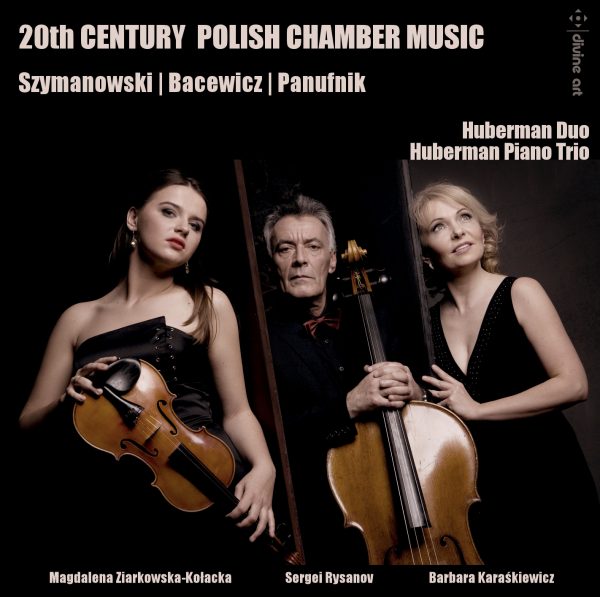American Record Guide
The Huberman Trio is named after one of Poland’s greatest violinists, Bronislaw Huberman (1882-1947). Violinist Magdalena Ziarkowska-Kolacka and pianist Barbara Karaskiewicz are joined by cellist Sergei Rysanov. Ziarkowska-Kolacka studied music at the Paderewski Academy of Music in Poznan and is deputy concertmaster of the Leopoldinum Orchestra in Wroclaw. She is writing her doctoral dissertation on Bronislaw Huberman. Karaskiewicz studied at the Karol Szymanowski Academy of Music in Katowice and the Fryderyk Chopin University of Music in Warsaw. Rysanov attended music conservatories in Baku and Moscow and is principal cellist of the Czestochowa Philharmonic. All three musicians are excellent and do full justice to the music.
The best-known work here is Szymanowski’s (1882-1937) late-symbolist masterpiece, the Violin Sonata from 1904. This is one of the very best performances of it that I have heard, rivalling the accounts by David Oistrakh, Tasmin Little (Nov/Dec 2017), and Chee-Yun Kim (Sept/Oct 2020) and with better sound than the Oistrakh or Kim.
Andrzej Panufnik (1914-91) and Grazyna Bacewicz (1909-69) were from the next generation of Polish composers. Panufnik’s trio is late romantic with slightly modern harmonies scattered here and there. It is his Opus 1 and he wrote it when he was 20. Sometimes it has a slight air of foreboding and touches of the kind of sardonic humor that are common in the music of Soviet composers like Prokofieff and Shostakovich. The composer would later have to endure the same kind of bureaucratic oppression that his Soviet counterparts were subjected to.
Bacewicz wrote her Violin Sonata 4 in 1949. It is in a similar late-romantic vein as Panufnik’s Trio with the same 20th Century Slavic sardonicism. It is remarkable how this style became popular when the authorities would probably have preferred a more optimistic, naive mood. Both the Trio and Sonata 4 are very fine works, but many may prefer the sunny optimism of Szymanowski’s Sonata, which was written before the skies of Europe had been clouded by two horrible wars and several oppressive regimes.
Rysanov’s cello was made in Brescia around 1650 by Giouita Rodiani. Good sound.
@divineartrecordingsgroup
A First Inversion Company
Registered Office:
176-178 Pontefract Road, Cudworth, Barnsley S72 8BE
+44 1226 596703
Fort Worth, TX 76110
+1.682.233.4978












